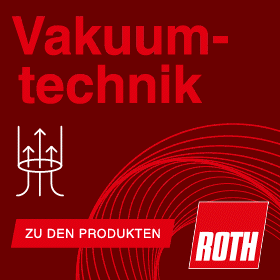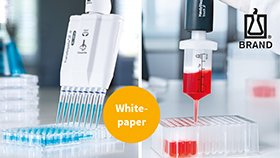Majulah Singapura
From Fishing Village to Asia’s Biopolis (Pt I)
Career strategies for young European scientists
by Ralf Schreck, Labtimes 03/2013
Page 1 | Page 2 | Page 3
In the eye of the Asian tiger
The lack of natural resources, in addition to a shortage of water and cultivatable land, makes Singapore dependent on the import of raw materials and goods and their subsequent processing and re-export. For example, Singapore is the world’s number three when it comes to oil refinement and accounts for more than a tenth of the global semiconductor output. This is facilitated by the Port of Singapore, which is the world’s second largest port after Shanghai with respect to cargo tonnage, by thorough economic planning of Singapore’s Economic Development Board and by most favourable conditions for doing business.
Low taxes, several free trade agreements as well as the reputation for being one of the most business-friendly and least corrupt countries attract large investments from the private sector including foreign companies. There is still a dominant influence of so-called government-linked companies in Singapore. This dates back to the 1960s, when the Singaporean Government acquired stakes of local industries, such as the later Singapore Airlines or Singapore Telecommunications. To manage these assets, Temasek Holdings was established as a sovereign wealth fund in 1975 with the Ministry of Finance as sole shareholder. Nowadays, Temasek Holdings’ total assets are estimated to be in the range of € 125 billion and it has become a major global investor in diverse industrial sectors, such as financial services, real estate, telecommunication, transportation, energy or life sciences.
Singapore’s economic success is based on its diversity. Manufacturing, financial services and, increasingly, tourism have become major sources of national income. Singapore’s four main manufacturing pillars, which were declared by the Government as main economic drivers more than a decade ago, encompass electronics, chemicals, engineering and biomedicine. Nowadays, the manufacturing sector accounts for more than a quarter of the gross domestic product (GDP) of Singapore. Another quarter is generated by the financial sector as Singapore has developed into one of the globally-leading financial centres. With about 188,000 millionaire households, Singapore has the highest millionaire density in the world, followed by Qatar and Kuwait. More than 14 million tourists last year set a new record high. This was partially attributed to increasing medical tourism and the legalisation of gambling, which turned Singapore into the world’s second-largest market for casino gambling, with revenues close to that of Las Vegas. On the downside of the economic success are escalating living and property costs. According to a 2013 survey by the Economist Intelligence Unit, Singapore has become the sixth most expensive city in the world. In addition, it has one of the highest income disparities worldwide: the high demand for cheap labour and the almost unlimited availability of foreign workers in combination with the lack of minimum wages adversely affect the Singaporean pay cheque.
Competition is the name of the game
Within a short period of time, Singapore has developed into a global player with one of the world’s highest per-capita GDP. For its fast-paced development it is called an Asian Tiger country in the same breath with Hong Kong, South Korea and Taiwan. According to the latest Global Competitiveness Report by the World Economic Forum, Singapore is second-best worldwide among 144 nations, only outperformed by Switzerland but ahead of Sweden and Finland. In the report it was at the forefront for efficiency of its labour and goods markets, its quality in maths and science education and transparency of governmental policy making. It was runner-up in higher education, overall infrastructure and procurement of advanced tech products by the Government. It slightly improved with respect to the intensity of university-industry cooperation (5th) and company spending on research and development (8th) and it maintained its position for the quality of scientific research institutions (12th).
In other rankings with different weighting factors, Singapore has lost some footing. For example, Singapore was top of the range in the 2010 World Competitiveness Yearbook by the International Institute for Management Development (IMD) but was outpaced by Hong Kong, the US and Switzerland two years later. The major cause was a drop in economic performance, including increasing living costs and consumer price inflation. Included in the report was also an executive opinion survey on the key attractiveness factors of Singapore. Political stability and predictability, competence of the Government and effective legal environment were praised, whereas other factors such as cost competitiveness, strong R&D culture as well as open and positive attitude were less often selected.
High citation rates in focus areas
Singapore promotes itself as the “Biopolis” and innovation capital of Asia. But being an economic powerhouse and pretending to be a world-class research hub are two pairs of shoes. Is there any evidence for the scientific excellence in Singapore?
The Nature Publishing Index Asia-Pacific has just been released this March and gives some indication. The Index is an analysis of research articles published during the year in 18 different Nature journals, half of which have an impact factor above 20. The number of articles was corrected by the number of institutions per author and the percentage of authors per institution. According to the publisher, the selection of journals in the Index gives a snapshot of primarily basic science, whereas other disciplines including clinical medicine or engineering are underrepresented. Japan, China, Australia and South Korea took the lead but Singapore was ranked fifth and displayed the highest growth rate of all countries. At the institutional level, the National University of Singapore (NUS) further improved its standing, from 16th to 9th place. The institutions of the Agency for Science, Technology and Research (A*STAR) and Nanyang Technological University (NTU) were ranked 16th and 34th, respectively. Overall, the trio contributed to more than 93% of all publications, including authors affiliated with a Singaporean institution.
According to InCites by Thomson Reuters, Singapore’s citation impact covering the period 2005-2009 is strikingly above world average in the fields of biomaterials, cell and tissue engineering and biomedical engineering. In the SCImago Journal and Country Ranking, which covers the period between 1996 and 2011, Singapore is the leading Asian nation concerning citations per paper in the fields of engineering, materials science, chemistry and biochemistry/genetics/molecular biology. This provides some evidence that its investments into priority areas are paying off. At the global scale, Singapore is 32nd concerning citable documents, 30th with respect to citations per paper and 21st in the category citations per paper, if countries with more than 100,000 publications are taken into consideration. Whereas in 2001 it was rated 21st in the category cites-per-document (among countries > 5,000 citable documents), it even outranked the UK, Finland and Germany in 2011 at eighth position. This is no surprise, since Singapore does not have to sustain a highly diversified research landscape with respect to scientific disciplines, is able to focus on cutting-edge research and must not address the broad basis of research with average quality. Overall, although absolute publication numbers are still low, growth and citation rates are on the rise and give proof of the high quality of Singapore’s publication output.
Do things in a big way
Singapore continues to boost its economy by making major investments into research and development (R&D). Over the last decade, overall expenses for R&D in Singapore grew 2.5-fold in absolute terms with an average annual growth rate of close to 10%. In the same period, the number of researchers was almost doubled. In 2011, Singapore’s gross expenditure on R&D amounted to € 4.7 billion, which accounts for 2.3% of its gross domestic product.
Two-thirds of R&D expenses were on the business sector, which conducted basic research (10%), applied research (30%) or experimental development (60%). More than half of its R&D expenses were on electronics, information and telecommunication technologies and media. Precision and transport engineering accounted for 14%, and biomedical sciences for roughly 12%. The remaining third of R&D expenses is provided by the public sector.
Types of activities include pure basic research with no societal or economic benefit (11%), strategic basic research with potential impact on societal or economic problems (23%), applied research (39%) and experimental development (31%). In the public sector most funds were spent on biomedical sciences (33%), followed by electronics, information and telecommunication technologies and media (25%), and precision and transport engineering, and chemicals (each 10%). Overall, the Singaporean Government directly funded 6% of R&D in the private sector, 83% of R&D in the higher education sector and 97% of R&D at public research institutions.
According to the latest available national R&D survey, about 30,000 researchers and engineers with at least a Bachelor degree are employed in Singapore. About 40% of its PhDs and more than 70% of all PhD students are foreigners. Of the estimated 8,000 PhDs, more than three-quarters of PhDs are employed in public sector institutions. Whereas the number of Singaporeans and permanent residents doing R&D has been more or less constant over the last five years, the share of foreigners has grown by 8% annually. Researcher intensity, as measured by full-time equivalence as percentage of workforce, was 10.4% and comparable to that of Norway or Korea but far away from the leader Finland with 15.5%.
Page 1 | Page 2 | Page 3
Last Changed: 09.05.2013







